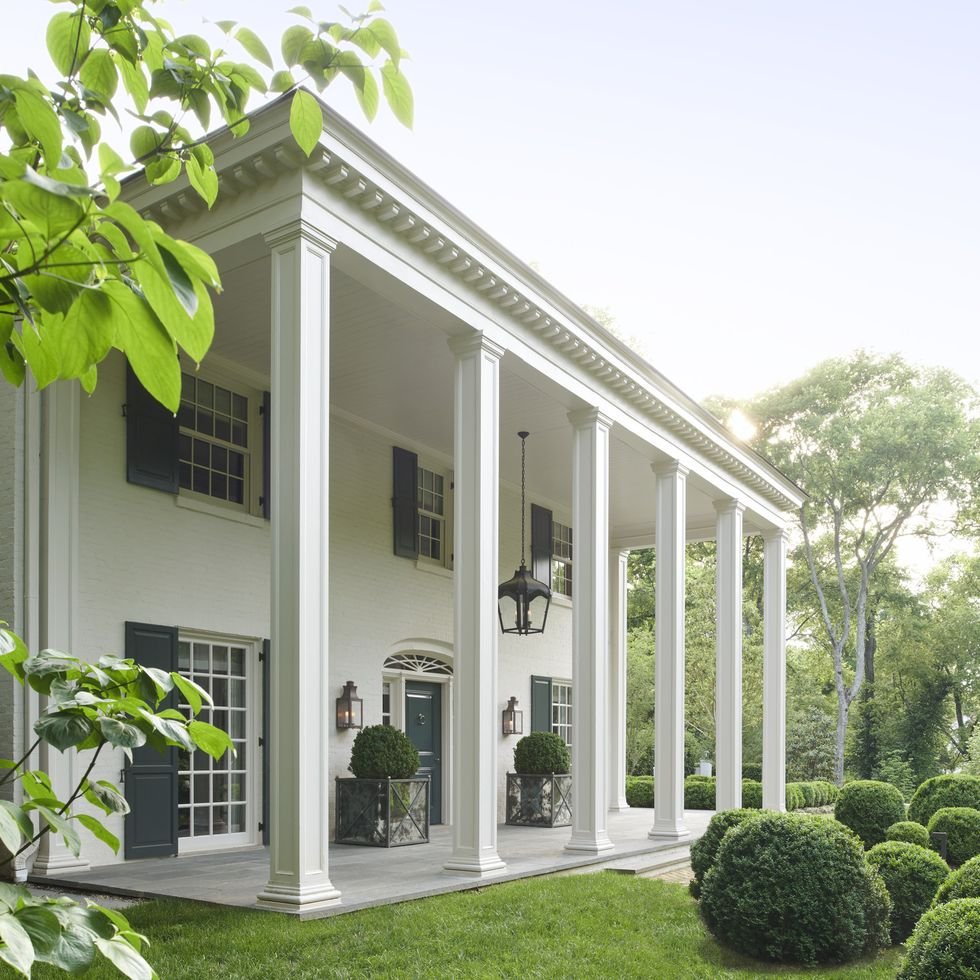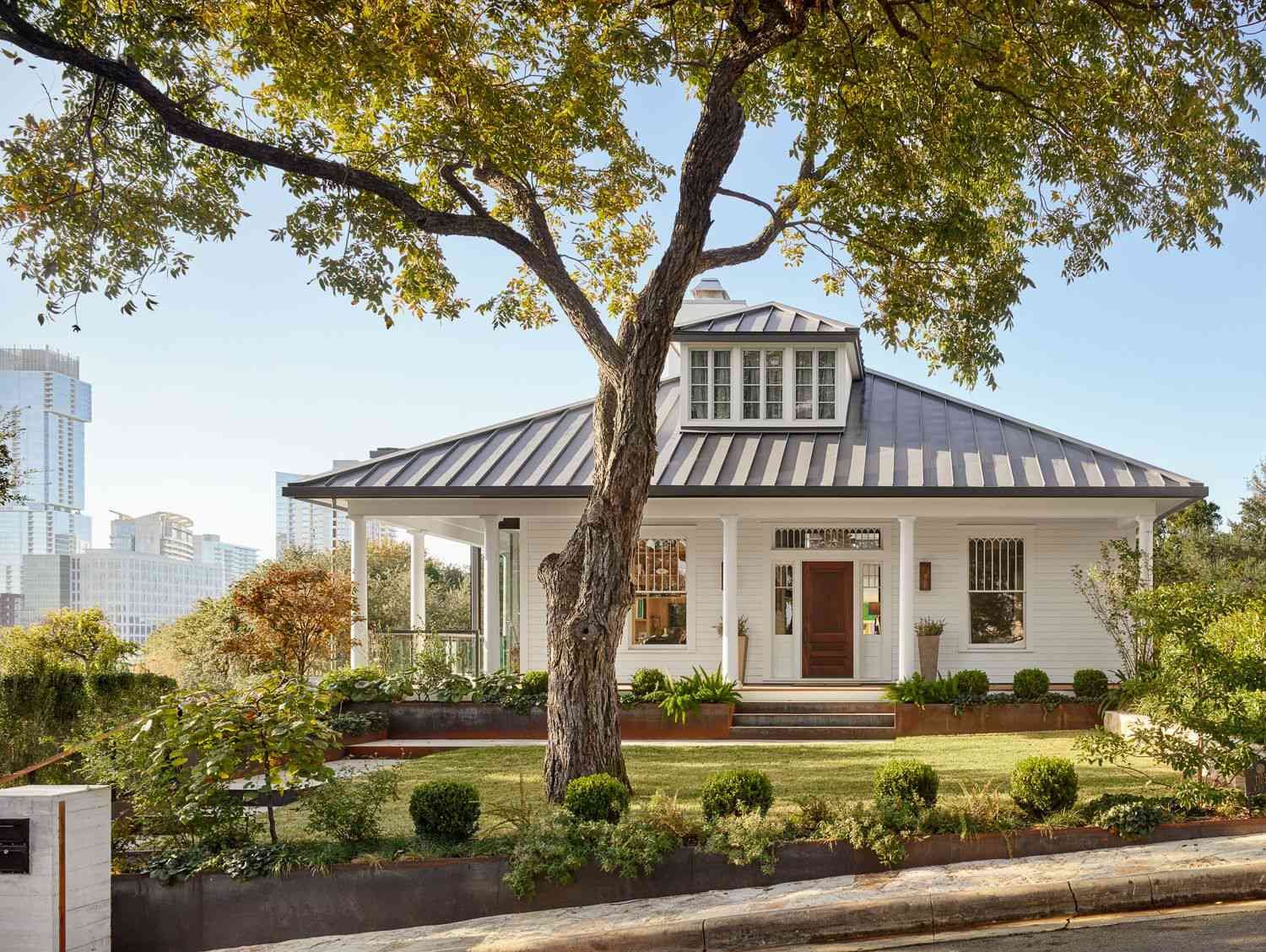Designing a Classical Entrance for a Home
By Chaukor Studio : Interior Designers in Greater Noida
Preface : A classical entrance design is marked by an array of distinctive characteristics that exude elegance and grandeur. First and foremost, symmetry is a key feature, with a central axis guiding the design. The entrance often showcases a prominent doorway that commands attention, featuring elaborate moldings, ornate columns, and majestic pediments. The use of classical architectural elements such as pilasters, friezes, and cornices adds a sense of timeless beauty to the design. The materials employed in a classical entrance design are typically high-quality and durable, such as marble, stone, or wrought iron. Additionally, the entrance is often flanked by stately symmetrical windows that provide a glimpse into the grandeur of the interior space. A classical entrance sets the tone for the rest of the building, leaving a lasting impression on visitors with its refined and dignified aesthetic.
Today, we set our sights on one of the most captivating elements of a home - the entrance. More than just a gateway, the entrance serves as a reflection of the essence and personality of a house, leaving a lasting impression on anyone who crosses the threshold. In this particular blog, we shall embark upon a journey that encapsulates the charm, grandeur, and grace of classical architecture, as we guide you through the principles and techniques of designing a classical entrance for your home. Rooted in time-honored traditions yet consistently relevant, classical design brings an aura of sophistication and refinement to any space it adorns. From the stately columns and intricate moldings to the symmetrical balance and harmonious proportions, a classical entrance embodies a sense of timelessness that transcends passing trends. It is a true embodiment of grace and elegance, creating an atmosphere of welcome and promise.
Columns and Pilasters
By Chaukor Studio : Interior Designers in Greater Noida
Columns, both crisp and ornamented, mat be used and incorporated to create a classic front elevation
Source: https://in.pinterest.com/badwannew/m/
https:https://www.veranda.com/outdoor-garden/g28040213/front-porch-decorating-ideas/
In the magnificent design of a classical entrance, columns and pilasters take on a significant role, contributing to the creation of an atmosphere of magnificence and sophistication. These architectural features not only provide necessary support but also serve as captivating visual focal points, instantly grabbing the attention of visitors and setting the tone for the entire space. The towering presence of columns conveys a sense of strength and resilience, symbolizing the enduring nature of the structure. On the other hand, pilasters bring a sense of harmony and proportion, while adding depth and texture to the façade. Collaboratively, these elements fulfill the purpose of establishing a clear hierarchy and drawing attention towards the central point of focus, thereby delineating the entrance. In addition to their functional roles, the intricate detailing and decorative enhancements on columns and pilasters evoke a feeling of immaculate craftsmanship and artistry, which are synonymous with classical design.
Entablature
By Chaukor Studio : Interior Designers in Greater Noida
Source: https://www.veranda.com/outdoor-garden/g28040213/front-porch-decorating-ideas/
The entablature is the horizontal structure that rests on top of the columns or pilasters. It consists of three parts: the architrave (bottom horizontal beam), the frieze (middle decorative band), and the cornice (top projecting ledge). The entablature helps define the visual weight of the entrance.The entablature is a crucial component in the design of classical entrances. Not only does it showcase beauty and significance, but it also adds to the overall magnificence of the structure. This architectural element, located above the columns, enhances the entrance with its intricate details and balanced proportions, exuding elegance and sophistication. Moreover, the entablature provides practical support and durability to the structure, ensuring its longevity. Additionally, it serves as a symbol of classical architecture's illustrious heritage, captivating viewers and reminding them of the enduring splendor it brings to every building it adorns.
Pediment
By Chaukor Studio : Interior Designers in Greater Noida
For a classic front elevation, a pediment is not only crucial but its definitely aids to create the apt magnanimous appeal
Source: https://www.archdaily.com/977135/the-confusing-reality-of-building-styles
In the world of classical architecture, there are few elements that can match the allure and significance of the pediment. Positioned gracefully above the entrance of a house, the pediment serves as a powerful symbol of the elegance and majesty of a bygone era. Its triangular shape, adorned with intricate sculptures, reliefs, and architectural details, captivates the eye and exudes an aura of grandeur. However, the pediment is not just a visually stunning feature; it also holds a vital role as the gateway to a home, inviting and guiding visitors into the sacred realm of domestic life. Its presence is a visible declaration of the homeowner's commitment to architectural harmony, craftsmanship, and historical importance. Each pediment is a truly one-of-a-kind masterpiece, representing the lineage and cultural heritage of classical architecture, continually reminding us of the timeless and enduring appeal of this magnificent design element.
Tripartite Division
By Chaukor Studio : Interior Designers in Greater Noida
Source: https://www.veranda.com/outdoor-garden/g28040213/front-porch-decorating-ideas/
The Tripartite Division is a deeply significant design principle that carries immense beauty and utmost importance in the creation of classical home entrances. It gracefully divides the entrance into three distinct sections, bestowing a harmonious and refined sense of balance and elegance upon the overall design. The central section, adorned with its resplendent grandeur, stands as the captivating focal point, while the gracefully symmetrical side sections contribute to a sense of stability and order. This division, beyond its visually stunning impact, serves practical purposes by providing a clear and unobstructed pathway for movement, effortlessly guiding guests into the heart of the home. Moreover, the Tripartite Division highlights the intrinsic value of proportion and symmetry, both being foundational elements of classical architecture. In essence, this design technique assumes a pivotal role in safeguarding the timeless and awe-inspiring beauty that encompasses classical home entrances.
Porticoes
By Chaukor Studio : Interior Designers in Greater Noida
A classic front elevation and porticos are almost like two sides of the same coin..isn’t it?
Source: https://www.thespruce.com/front-porch-column-ideas-7643349
Porticoes hold a timeless and captivating charm, playing a vital role in the classical design of homes. With their elegant structure, consisting of a series of columns supporting a roof, these structures create an exquisite entrance that captivates the gaze and welcomes visitors with open arms. The importance of porticoes extends beyond their aesthetic appeal, as they also serve practical purposes. They provide much-needed shelter from the elements, offering a warm and protected space for both homeowners and guests before entering the house. Additionally, porticoes serve as a transition between the external and internal spaces, guiding individuals into the grandeur of the home. Their harmonious proportions and graceful detailing enhance the architectural language, exuding an air of stateliness and sophistication. It is impossible to overstate the beauty and significance of porticoes in classical home design, as they leave a lasting impression and transform an ordinary entrance into a truly majestic gateway.
Symmetrical Steps
By Chaukor Studio : Interior Designers in Greater Noida
Source: https://www.veranda.com/outdoor-garden/g28040213/front-porch-decorating-ideas/
Symmetrical steps are essential components to consider while designing a classical home entrance. Their significance lies in the provision of balance, harmony, and a grand atmosphere to the overall architectural composition. With a visually rhythmic and orderly arrangement, the steps create an inviting ambiance that pleases the eye. The elegance, sophistication, and timeless charisma associated with classical design are exuded through the symmetrical steps. Not only do they enhance the entrance's aesthetics, but they also ensure easy and safe passage for visitors. By integrating symmetrical steps into the entrance design, architects can create a captivating and lasting first impression while adhering to the fundamental principles of classical aesthetics.
Decoration
By Chaukor Studio : Interior Designers in Greater Noida
Source: https://www.veranda.com/outdoor-garden/g28040213/front-porch-decorating-ideas/
When it comes to designing a classical home entrance, one cannot underestimate the beauty and grandeur that decorations like moldings, friezes, metopes, and ornate carvings bring to space. These intricate and meticulously crafted details add a touch of elegance and sophistication to the overall design. The ornate moldings, with their intricate patterns and delicate curves, create a sense of depth and dimension, making the entrance visually captivating. The beautifully carved friezes and metopes narrate stories of the past, infusing the space with a sense of history and culture. And it is the ornate carvings that truly steal the show, with their meticulously detailed motifs and symbols, adding a touch of opulence and grandeur to the classical home entrance. Together, these elements create a space that is not just functional but also a visual treat, capturing the essence of classical design with its intricate decorations.
Materials
By Chaukor Studio : Interior Designers in Greater Noida
Rustic and timeless materials always prove to be the best options for creating a classic front elevation
Source: https://www.tollbrothers.com/luxury-homes-for-sale/Georgia/Highlands-at-Vinings/Vickery









